Grow Turnips in Your Backyard: Imagine stepping outside your back door and harvesting fresh, crisp turnips for your dinner table. Sounds idyllic, right? Well, it’s more achievable than you might think! For centuries, turnips have been a staple crop, providing sustenance and versatility across cultures. From hearty stews in medieval Europe to pickled delicacies in Asia, this humble root vegetable has a rich history.
But in today’s fast-paced world, many of us have lost touch with the simple joy of growing our own food. That’s where this DIY guide comes in! I’m here to show you that you don’t need acres of land or a green thumb to successfully grow turnips in your backyard. Whether you’re a seasoned gardener or a complete beginner, I’ll walk you through the process step-by-step, sharing my favorite tips and tricks for a bountiful harvest.
Why should you bother? Because fresh, homegrown turnips taste infinitely better than anything you’ll find in the supermarket. Plus, gardening is a fantastic way to relieve stress, connect with nature, and enjoy the satisfaction of nurturing something from seed to table. So, grab your gardening gloves, and let’s get started on this exciting journey to grow turnips in your backyard!
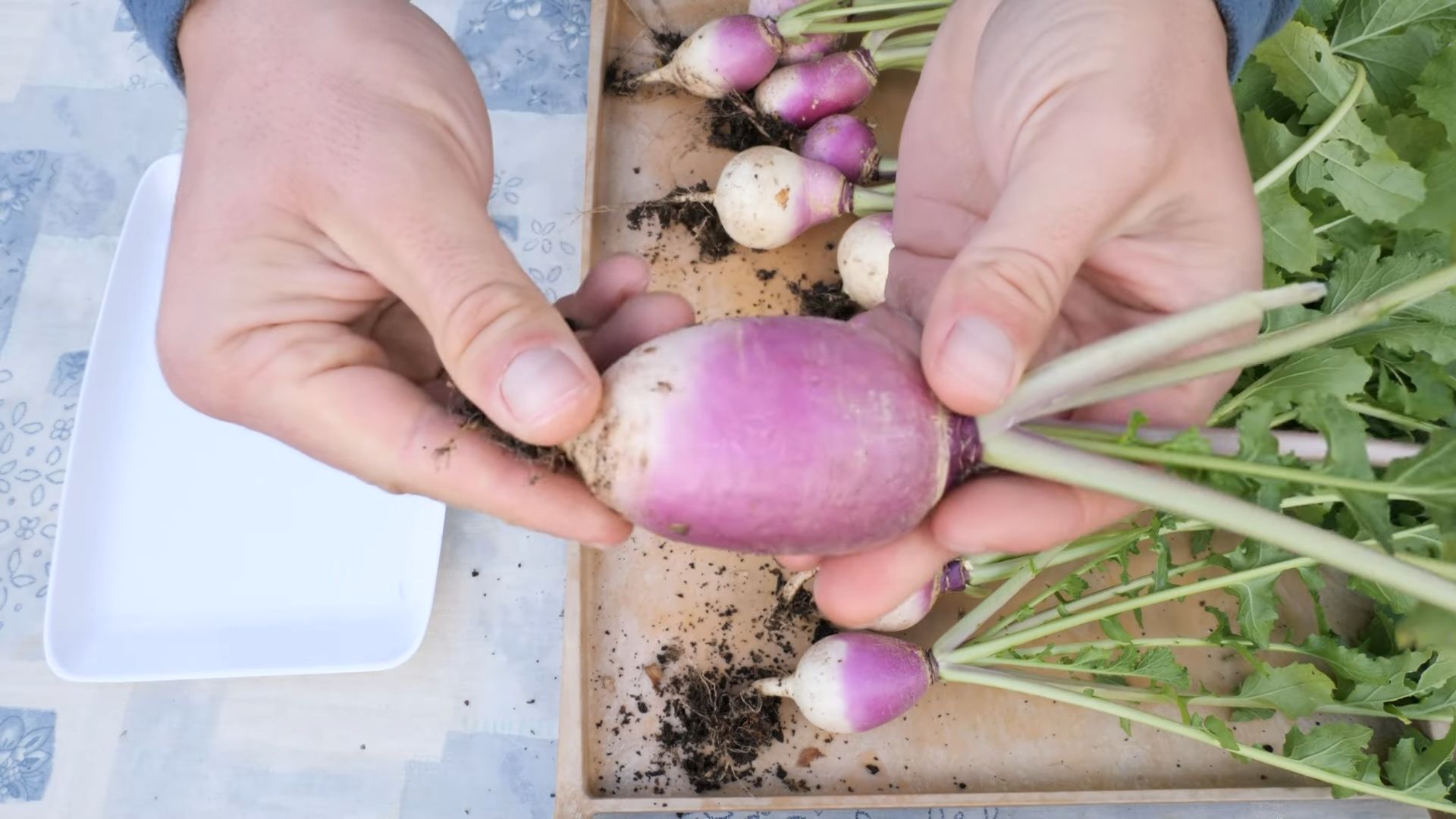
Growing Artichokes: A DIY Guide to Edible Garden Success
Hey there, fellow garden enthusiasts! I’m so excited to share my experience with growing artichokes at home. These architectural beauties not only add a unique touch to your garden but also reward you with delicious, homegrown treats. It might seem daunting at first, but trust me, with a little patience and the right guidance, you can absolutely cultivate these thistles in your own backyard. Let’s dive in!
Choosing Your Artichoke Variety
Before we get our hands dirty, it’s important to choose the right artichoke variety for your climate. Some varieties thrive in warmer regions, while others are more cold-hardy. Here are a few popular choices:
* Green Globe: This is a classic and widely available variety, known for its large, round globes and excellent flavor. It’s a great choice for beginners.
* Violetta: If you’re looking for something a little different, Violetta artichokes have a beautiful purple hue and a slightly sweeter taste.
* Imperial Star: This variety is known for its early production, making it a good option for shorter growing seasons.
* Big Heart: As the name suggests, this variety produces large, meaty hearts with fewer prickly chokes.
I personally started with Green Globe because it’s readily available at most nurseries and has a reputation for being relatively easy to grow.
Getting Started: Propagation Methods
You have a few options when it comes to starting your artichoke plants: seeds, root divisions, or transplants.
* Seeds: Starting from seed is the most economical option, but it requires more patience. Artichokes grown from seed may not produce true to type, meaning the resulting artichokes might not be exactly like the parent plant.
* Root Divisions: This is a great way to propagate artichokes if you already have a mature plant. You can divide the root ball and replant the individual sections. This ensures you’re getting a plant that’s identical to the parent.
* Transplants: Buying transplants from a nursery is the easiest and fastest way to get started. You’ll have a head start on the growing season and can be sure you’re getting a healthy, established plant.
I opted for transplants because I wanted to see results sooner rather than later. Plus, it eliminated the guesswork of starting from seed.
Preparing the Soil: A Foundation for Success
Artichokes are heavy feeders, so preparing the soil properly is crucial. They need well-drained soil that’s rich in organic matter.
* Soil Testing: Ideally, you should test your soil to determine its pH and nutrient levels. Artichokes prefer a slightly acidic to neutral pH (around 6.0 to 7.0).
* Amending the Soil: Amend your soil with plenty of compost, well-rotted manure, or other organic matter. This will improve drainage, aeration, and nutrient content.
* Fertilizing: Incorporate a slow-release fertilizer into the soil at planting time. Choose a fertilizer that’s high in phosphorus and potassium, which are essential for artichoke growth.
I added a generous amount of compost and aged manure to my garden bed before planting. I also mixed in a slow-release fertilizer specifically formulated for vegetables.
Planting Your Artichokes: Giving Them Room to Grow
Artichokes need plenty of space to thrive, so be sure to give them adequate room when planting.
* Spacing: Space artichoke plants at least 4 to 6 feet apart. This will allow them to spread out and get plenty of sunlight.
* Planting Depth: Dig a hole that’s slightly larger than the root ball of your transplant. Gently remove the plant from its container and loosen the roots. Place the plant in the hole, making sure the top of the root ball is level with the surrounding soil.
* Watering: Water thoroughly after planting to help settle the soil around the roots.
I made sure to give my artichoke plants plenty of space, as I knew they would eventually grow quite large. I also watered them deeply after planting to help them get established.
Caring for Your Artichokes: Watering, Fertilizing, and Pruning
Once your artichokes are planted, it’s important to provide them with proper care to ensure they thrive.
Watering
Artichokes need consistent moisture, especially during hot, dry weather.
* Regular Watering: Water deeply and regularly, especially during the first few weeks after planting.
* Avoid Overwatering: Be careful not to overwater, as this can lead to root rot. The soil should be moist but not soggy.
* Mulching: Apply a layer of mulch around the base of the plants to help retain moisture and suppress weeds.
I found that watering deeply every few days was sufficient, but I always checked the soil moisture before watering to avoid overwatering.
Fertilizing
Artichokes are heavy feeders and benefit from regular fertilization.
* Side-Dressing: Side-dress your artichoke plants with a nitrogen-rich fertilizer every few weeks during the growing season.
* Foliar Feeding: You can also supplement with foliar feeding, using a liquid fertilizer diluted according to the package directions.
I used a balanced liquid fertilizer every few weeks, and my artichokes seemed to respond well to it.
Pruning
Pruning is important for maintaining the health and productivity of your artichoke plants.
* Removing Suckers: Remove any suckers that grow from the base of the plant. These suckers will compete with the main plant for resources.
* Cutting Back After Harvest: After harvesting the artichokes, cut back the plant to about 12 inches tall. This will encourage new growth and help the plant overwinter.
* Deadheading: Remove any spent flower heads to encourage the plant to produce more artichokes.
I made sure to regularly remove suckers and deadhead spent flower heads to keep my artichoke plants healthy and productive.
Dealing with Pests and Diseases: Protecting Your Crop
Artichokes can be susceptible to certain pests and diseases, so it’s important to be vigilant and take action if necessary.
* Aphids: Aphids are small, sap-sucking insects that can weaken artichoke plants. You can control aphids with insecticidal soap or by introducing beneficial insects like ladybugs.
* Slugs and Snails: Slugs and snails can damage artichoke leaves and buds. You can control them with slug bait or by hand-picking them off the plants.
* Artichoke Plume Moth: This moth lays its eggs on artichoke buds, and the larvae can tunnel into the buds and damage them. You can control artichoke plume moth with insecticides or by covering the plants with row covers.
* Root Rot: Root rot is a fungal disease that can occur in poorly drained soil. To prevent root rot, make sure your soil is well-drained and avoid overwatering.
I had a minor aphid infestation on my artichoke plants, but I was able to control it with insecticidal soap.
Harvesting Your Artichokes: The Sweet Reward
Harvesting artichokes is the most rewarding part of the process!
* Timing: Harvest artichokes when the buds are still tight and the bracts (the outer leaves) are just beginning to open.
* Cutting: Cut the artichokes from the plant with a sharp knife, leaving about 2 inches of stem attached.
* Storage: Store harvested artichokes in the refrigerator for up to a week.
I was so excited when I harvested my first artichokes! They were so much fresher and more flavorful than anything I could buy at the store.
Overwintering Artichokes: Preparing for the Cold
In colder climates, artichokes need to be protected during the winter.
* Cutting Back: Cut back the plant to about 12 inches tall after harvesting the last artichokes.
* Mulching: Apply a thick layer of mulch around the base of the plant to insulate the roots.
* Covering: In very cold climates, you may need to cover the plant with a tarp or blanket to protect it from frost.
I live in a relatively mild climate, so I only needed to mulch my artichoke plants to protect them during the winter.
Enjoying Your Harvest: Cooking and Eating Artichokes
There are many ways to enjoy your homegrown artichokes!
* Steaming: Steaming is a classic way to cook artichokes. Simply steam them until the bracts are tender and the heart is easily pierced with a fork.
* Grilling: Grilling artichokes gives them a smoky flavor. Cut them in half, brush them with olive oil, and grill them until tender.
* Roasting: Roasting artichokes brings out their sweetness. Cut them in half, brush them with olive oil, and roast them in the oven until tender.
* Dipping Sauces: Serve cooked artichokes with your favorite dipping sauces, such as melted butter, aioli,
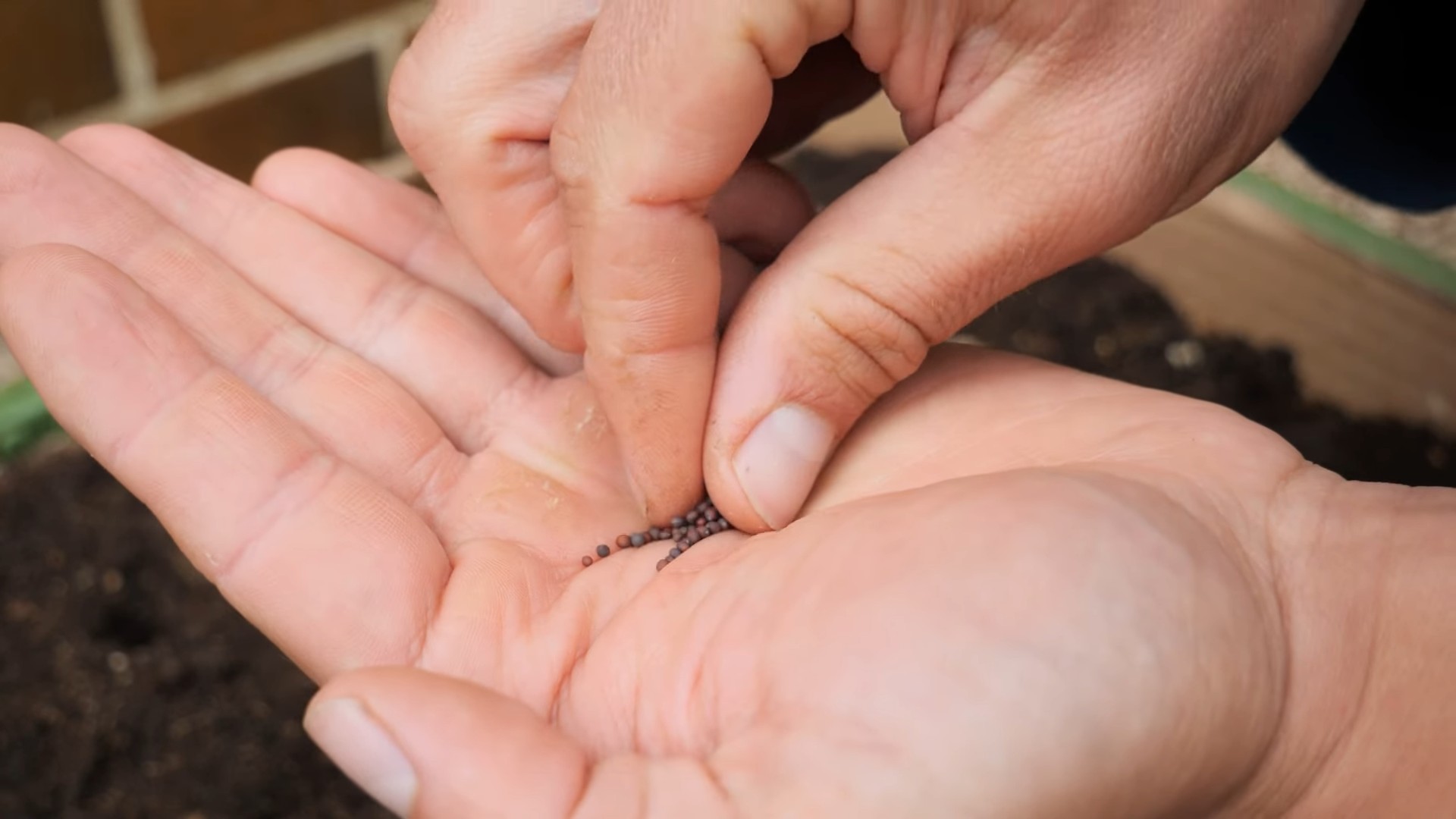
Conclusion
So, there you have it! Growing turnips in your backyard is not only surprisingly simple, but it’s also incredibly rewarding. From the crisp, peppery greens to the sweet, earthy roots, you’ll have a versatile ingredient ready to elevate your culinary creations. This DIY trick, bypassing the grocery store and connecting you directly to your food source, is a must-try for any home gardener, regardless of experience level.
Why is this a must-try? Because it offers a trifecta of benefits: fresh, organic produce, cost savings, and the sheer satisfaction of nurturing something from seed to table. Imagine the pride you’ll feel serving a salad featuring turnips you grew yourself, or roasting a batch of root vegetables with that distinctive turnip sweetness. Plus, you’ll be reducing your carbon footprint by cutting down on transportation and packaging.
But don’t stop there! Experiment with different varieties of turnips to discover your favorites. Try the classic Purple Top White Globe, the mild and buttery Golden Globe, or the vibrant Tokyo Cross. You can also adjust your planting schedule to extend your harvest season. Succession planting, sowing seeds every few weeks, will ensure a continuous supply of fresh turnips throughout the spring and fall.
Consider companion planting as well. Turnips thrive alongside other vegetables like beans, peas, and radishes. These companions can help deter pests and improve soil health, leading to even more bountiful harvests. You can also use the turnip greens as a natural fertilizer by chopping them up and adding them to your compost pile.
Beyond the basic roasting and salads, explore the diverse culinary possibilities of turnips. Try pickling them for a tangy condiment, grating them into fritters, or adding them to soups and stews for a boost of flavor and nutrition. The possibilities are endless!
We wholeheartedly encourage you to give this DIY trick a try. It’s an investment in your health, your wallet, and your connection to the natural world. Don’t be intimidated by the thought of gardening; turnips are remarkably forgiving and easy to grow. Even if you only have a small balcony or patio, you can still cultivate a thriving turnip patch in containers.
Once you’ve experienced the joy of harvesting your own homegrown turnips, we’d love to hear about it! Share your experiences, tips, and recipes in the comments below. Let’s build a community of turnip enthusiasts and inspire others to embrace the rewarding world of backyard gardening. Let us know what challenges you faced and how you overcame them. Did you try any interesting variations? What are your favorite ways to prepare your homegrown turnips? Your insights will be invaluable to other aspiring gardeners. So, grab some seeds, get your hands dirty, and discover the magic of growing turnips in your backyard! This simple DIY trick will transform the way you think about fresh produce.
Frequently Asked Questions (FAQ)
What is the best time of year to plant turnips?
Turnips are a cool-season crop, meaning they thrive in cooler temperatures. The best time to plant them is in the spring or fall. For a spring crop, sow seeds 2-4 weeks before the last expected frost. For a fall crop, sow seeds 6-8 weeks before the first expected frost. This timing allows the turnips to mature before the weather becomes too hot or too cold. In warmer climates, you can often grow turnips throughout the winter.
How much sunlight do turnips need?
Turnips need at least 6 hours of sunlight per day to grow properly. Choose a location in your backyard that receives ample sunlight throughout the day. If you’re growing turnips in containers, make sure to place them in a sunny spot. Insufficient sunlight can result in smaller roots and less flavorful greens.
What kind of soil is best for growing turnips?
Turnips prefer well-drained, fertile soil with a pH between 6.0 and 6.8. Before planting, amend the soil with compost or other organic matter to improve drainage and fertility. Avoid heavy clay soils, as they can become waterlogged and hinder root development. If your soil is compacted, consider tilling or double-digging to loosen it up.
How often should I water turnips?
Turnips need consistent moisture to thrive. Water them regularly, especially during dry periods. Aim to keep the soil consistently moist but not waterlogged. Overwatering can lead to root rot, while underwatering can stunt growth. A good rule of thumb is to water deeply whenever the top inch of soil feels dry to the touch.
How far apart should I plant turnip seeds?
Sow turnip seeds about 1/2 inch deep and 1 inch apart in rows that are 12-18 inches apart. Once the seedlings emerge, thin them to 3-4 inches apart to allow the roots to develop properly. Thinning is crucial for preventing overcrowding and ensuring that each turnip has enough space to grow.
When are turnips ready to harvest?
Turnips are typically ready to harvest 50-60 days after planting. You can harvest the greens at any time, but the roots are best harvested when they are 2-3 inches in diameter. To harvest, gently loosen the soil around the turnip and pull it out of the ground. You can also use a garden fork to lift the turnips from the soil.
Can I eat both the turnip greens and the roots?
Yes, both the turnip greens and the roots are edible and nutritious. The greens have a slightly peppery flavor and can be eaten raw in salads or cooked like spinach. The roots have a sweet, earthy flavor and can be roasted, boiled, mashed, or pickled. Both the greens and the roots are rich in vitamins, minerals, and fiber.
What are some common pests and diseases that affect turnips?
Some common pests that affect turnips include aphids, flea beetles, and root maggots. Common diseases include clubroot and powdery mildew. To prevent pest and disease problems, practice good garden hygiene, such as removing weeds and debris, and rotate your crops regularly. You can also use organic pest control methods, such as insecticidal soap or neem oil.
How do I store turnips after harvesting?
To store turnips, remove the greens and wash the roots thoroughly. Store the roots in a cool, dark, and humid place, such as a root cellar or refrigerator. They can be stored for several months under the right conditions. The greens can be stored in the refrigerator for a few days.
Can I grow turnips in containers?
Yes, you can grow turnips in containers. Choose a container that is at least 8 inches deep and wide. Fill the container with well-draining potting mix and sow the seeds as described above. Make sure to water the containers regularly and fertilize them with a balanced fertilizer. Container-grown turnips may require more frequent watering than those grown in the ground.

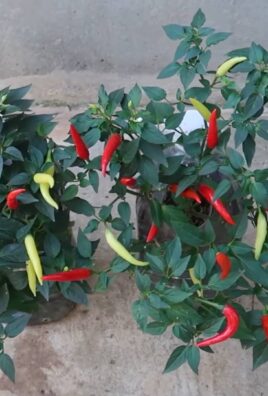
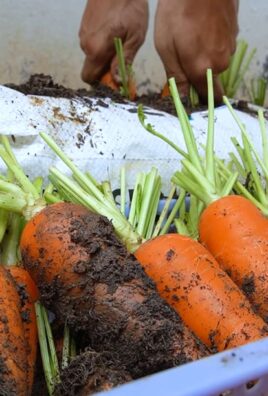
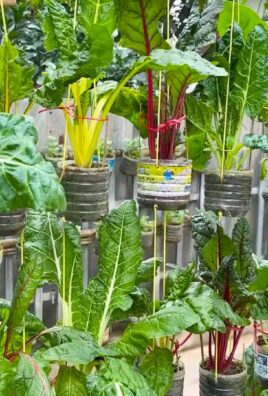
Leave a Comment